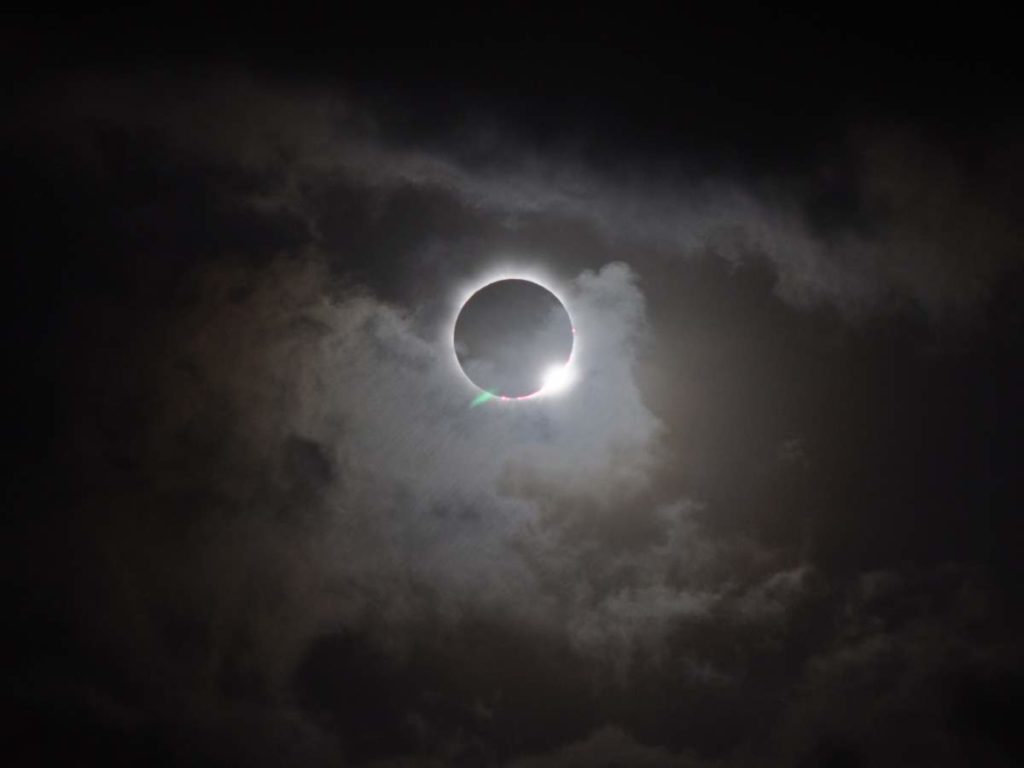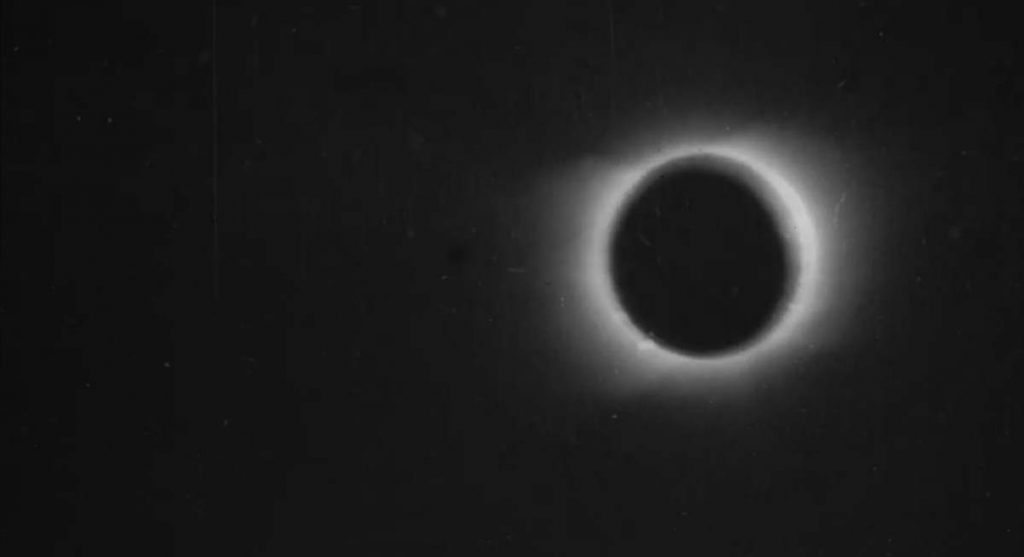On Monday, August 21, an estimated 2 million to 7.4 million Americans traveled to see the first total solar eclipse in 99 years to go coast to coast in the United States, which went from Lincoln Beach, Oregon, to Charleston, South Carolina. But, some of them were unlucky, as the weather was overcast in some places. But, luckily for them (and for us), NASA captured some amazing and beautiful images of the eclipse and published them on their website.
Total Solar Eclipse 2017 images from space [from the ISS]
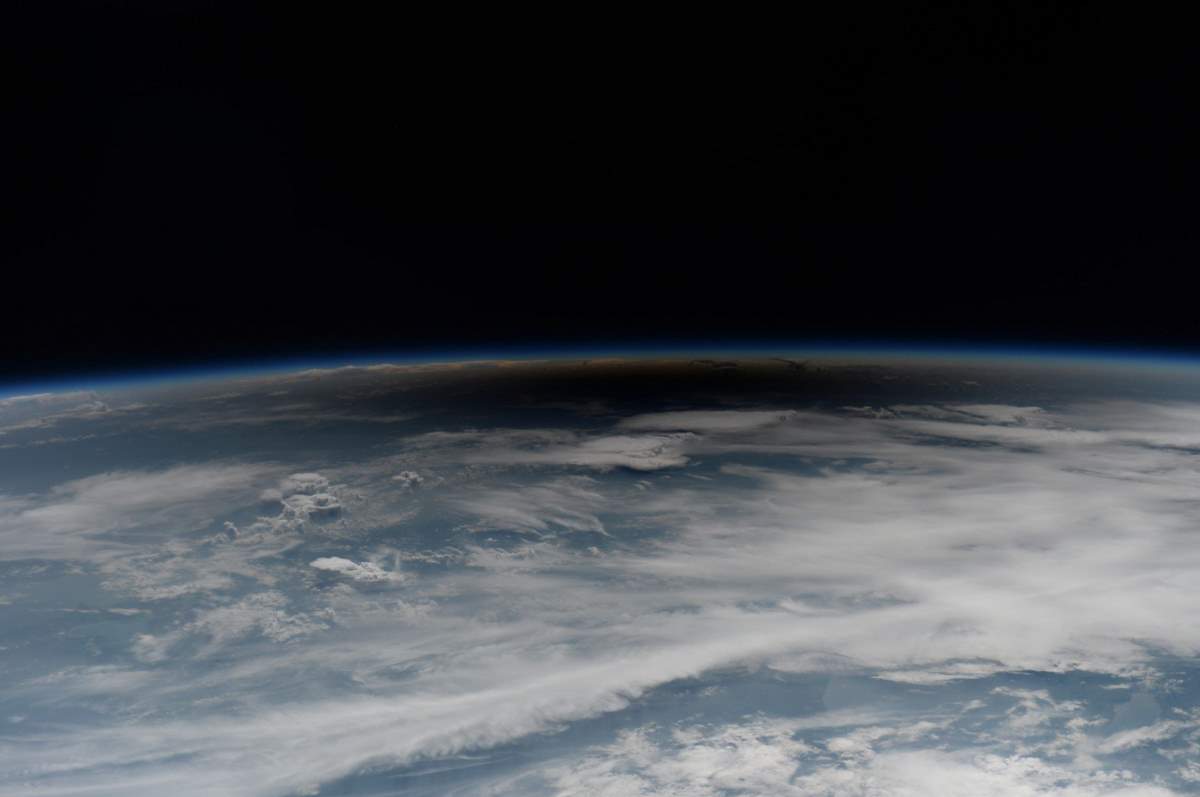
And the International Space Station during the partial eclipse, from Earth’s surface. The ISS travels at 7.67 km/s (4.75 mi/s) or 27,600 km/h (17,200 mph) about 405 km (521 mi) from the Earth’s surface.

Total Solar Eclipse 2017 From the Orbit of the Moon
During the total solar eclipse on August 21, 2017, NASA’s Lunar Reconnaissance Orbiter (see notes 1), or LRO, captured an image of the Moon‘s shadow over a large region of the United States, centered just north of Nashville, Tennessee.
As LRO crossed the lunar south pole heading north at 3,579 mph (5760 km/h or 1,600 meters per second), the shadow of the Moon was racing across the United States at 1,500 mph (2414 km/h or 670 meters per second).
A few minutes later, LRO began a slow 180-degree turn to look back at Earth, capturing an image of the eclipse very near the location where the totality lasted the longest. The spacecraft’s Narrow-Angle Camera began scanning Earth at 2:25:30 p.m. EDT (18:25:30 UTC) and completed the image 18 seconds later.
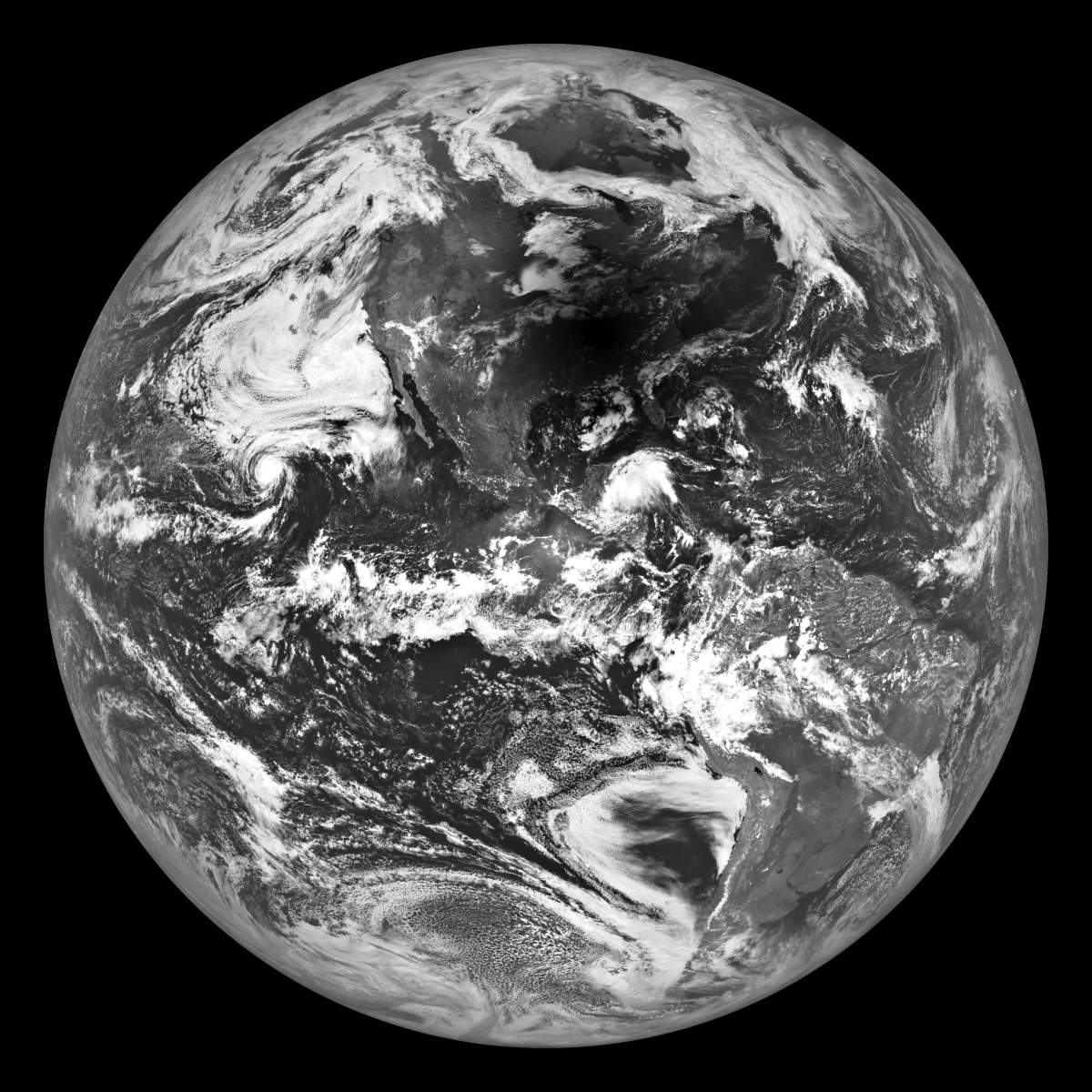
Sun’s Corona during the Total Solar Eclipse 2017
The Sun’s corona, which is only visible during the total eclipse, is shown as a crown of white flares from the surface in the photo below. It was captured from onboard a NASA Gulfstream III aircraft flying 25,000 feet above the Oregon coast. The red spots called Bailey’s beads (see notes 2) occur where the moon grazes by the Sun and the rugged lunar limb topography allows beads of sunlight to shine through in some areas.
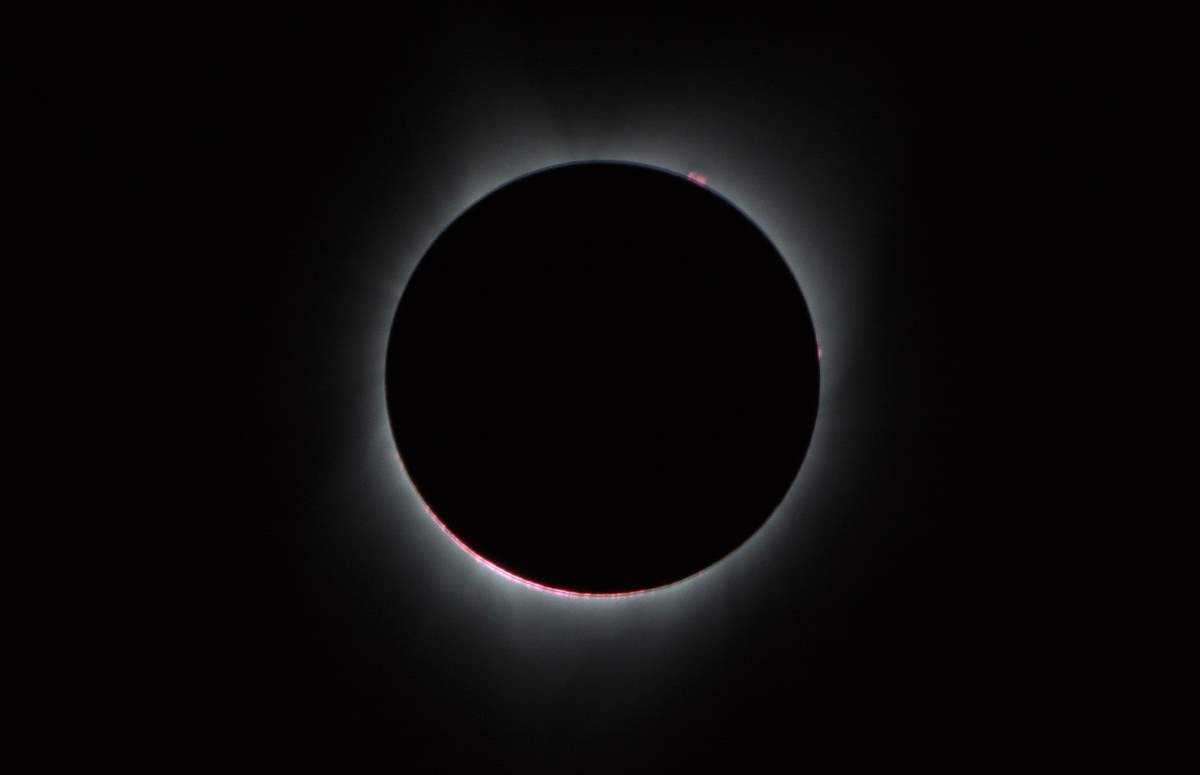
NASA’s EPIC View of 2017 Total Solar Eclipse Across America
NASA’s Earth Polychromatic Imaging Camera (EPIC) captured 12 natural-color images of the moon’s shadow crossing over North America on August 21, 2017, almost one million miles from Earth. EPIC is a four-megapixel CCD camera and telescope attached to the Deep Space Climate Observatory (DSCOVR). DSCOVR conducts its primary mission of real-time solar wind monitoring for the National Oceanic and Atmospheric Administration (NOAA).
It was originally developed as a NASA satellite proposed in 1998 by then-Vice President Al Gore for the purpose of Earth observation. It is at the Sun-Earth L1 Lagrangian point, 1,500,000 km (930,000 mi) from Earth, to monitor variable solar wind conditions, provide early warning of approaching coronal mass ejections, and observe phenomena on Earth including changes in ozone, aerosols, dust, and volcanic ash, cloud height, vegetation cover, and climate.
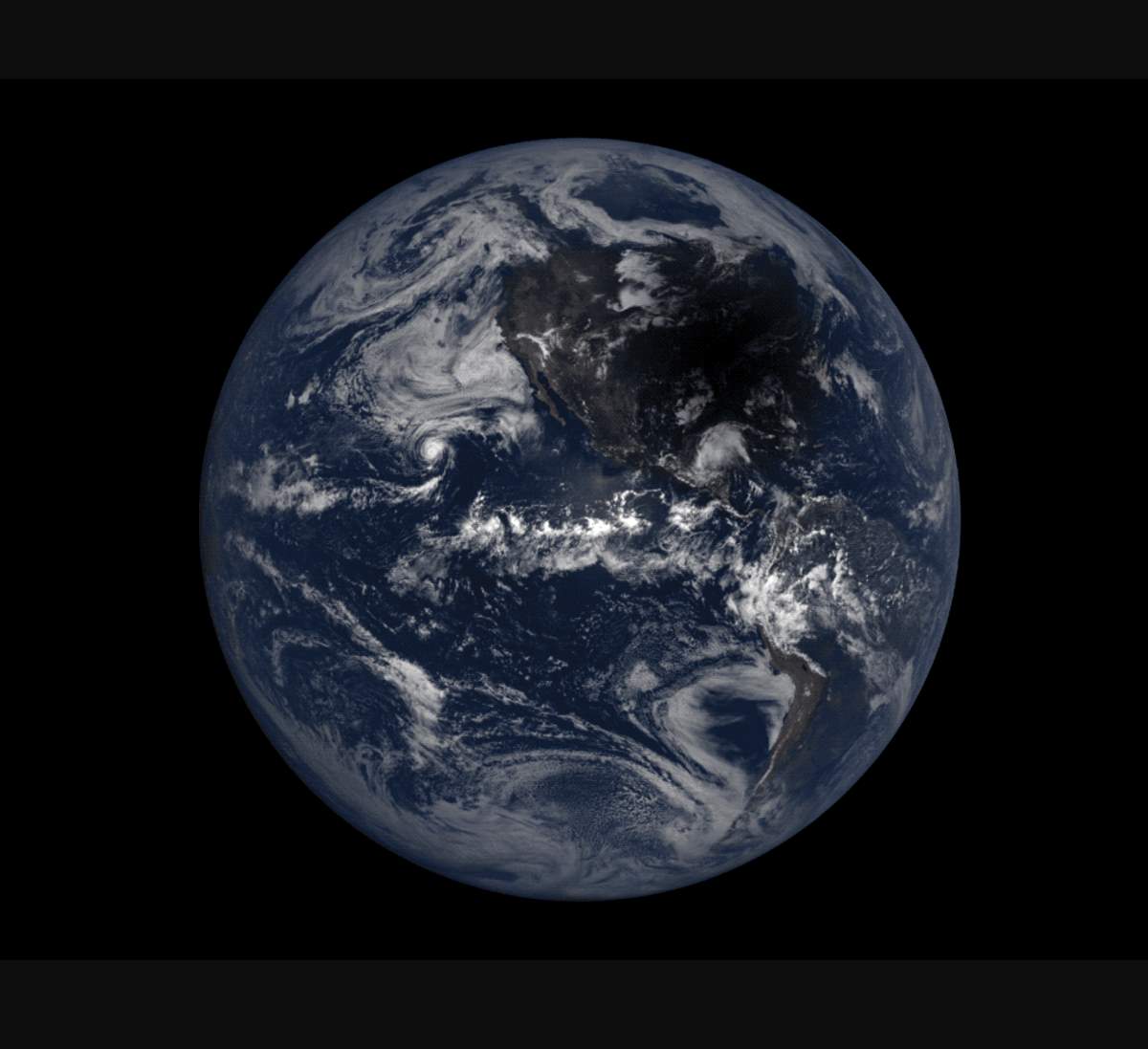
Here is the video of the EPIC view below published by NASA.
Hinode Satellite Captures Total Solar Eclipse from Space
The Japan Aerospace Exploration Agency, the National Astronomical Observatory of Japan, and NASA released this video of the August 21 total solar eclipse taken by the X-ray telescope aboard the Hinode joint solar observation satellite as it orbited high above the Pacific Ocean. Hinode, formerly Solar-B, is a Japan Aerospace Exploration Agency Solar mission with the United States and United Kingdom collaboration.
Notes
- Launched on June 18, 2009, the Lunar Reconnaissance Orbiter (LRO) is a NASA robotic spacecraft currently orbiting the Moon in an eccentric polar mapping orbit. Data collected by LRO has been described as essential for planning NASA’s future human and robotic missions to the Moon.
- The Baily’s beads effect, or Diamond ring effect, is a feature of total and annular solar eclipses. As the moon “grazes” by the Sun during a solar eclipse, the rugged lunar limb topography allows beads of sunlight to shine through in some places, and not in others. The name is in honor of the English astronomer Francis Baily (28 April 1774 – 30 August 1844) who provided an exact explanation of the phenomenon in 1836. The diamond ring effect is seen when only one bead is left; a shining diamond set in a bright ring around the lunar silhouette
.
Sources
- 2017 Total Eclipse on NASA.gov
- “NASA’s Lunar Mission Captures Solar Eclipse as Seen From the Moon” on NASA.gov
- Lunar Reconnaissance Orbiter on
Wikipedia - Baily’s beads on Wikipedia
- Moon Landings: All-Time List [1966-2025] - February 2, 2025
- What Is Max-Q and Why Is It Important During Rocket Launches? - January 16, 2025
- Top 10 Tallest Rockets Ever Launched [2025 Update] - January 16, 2025

